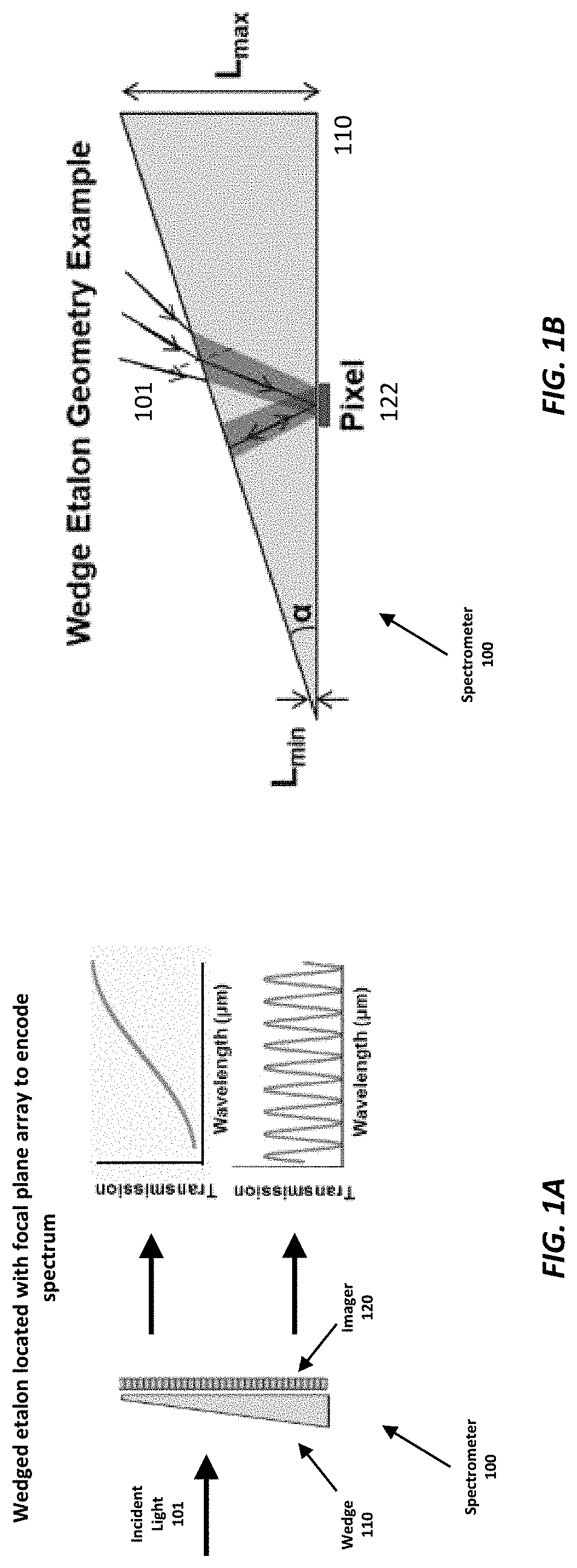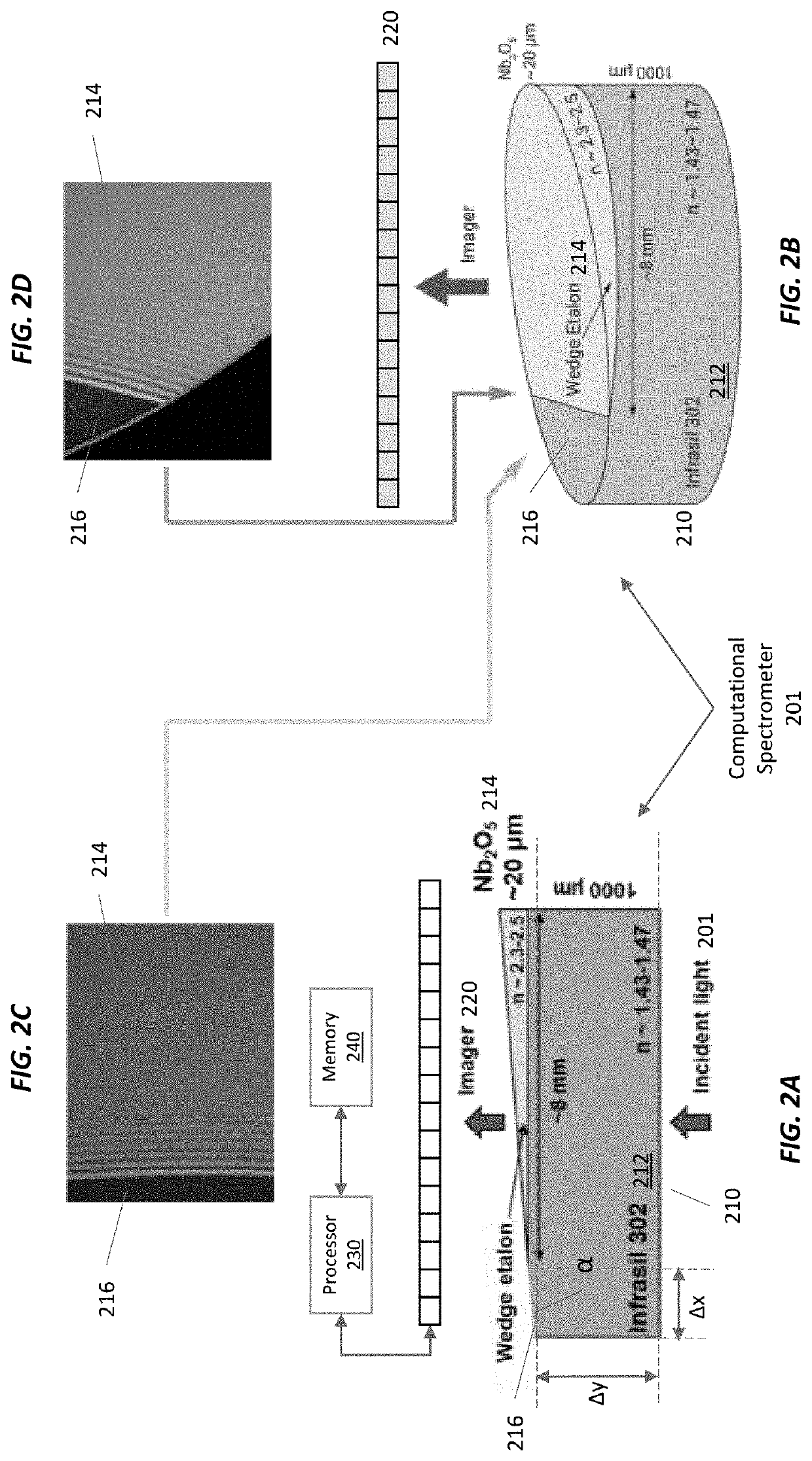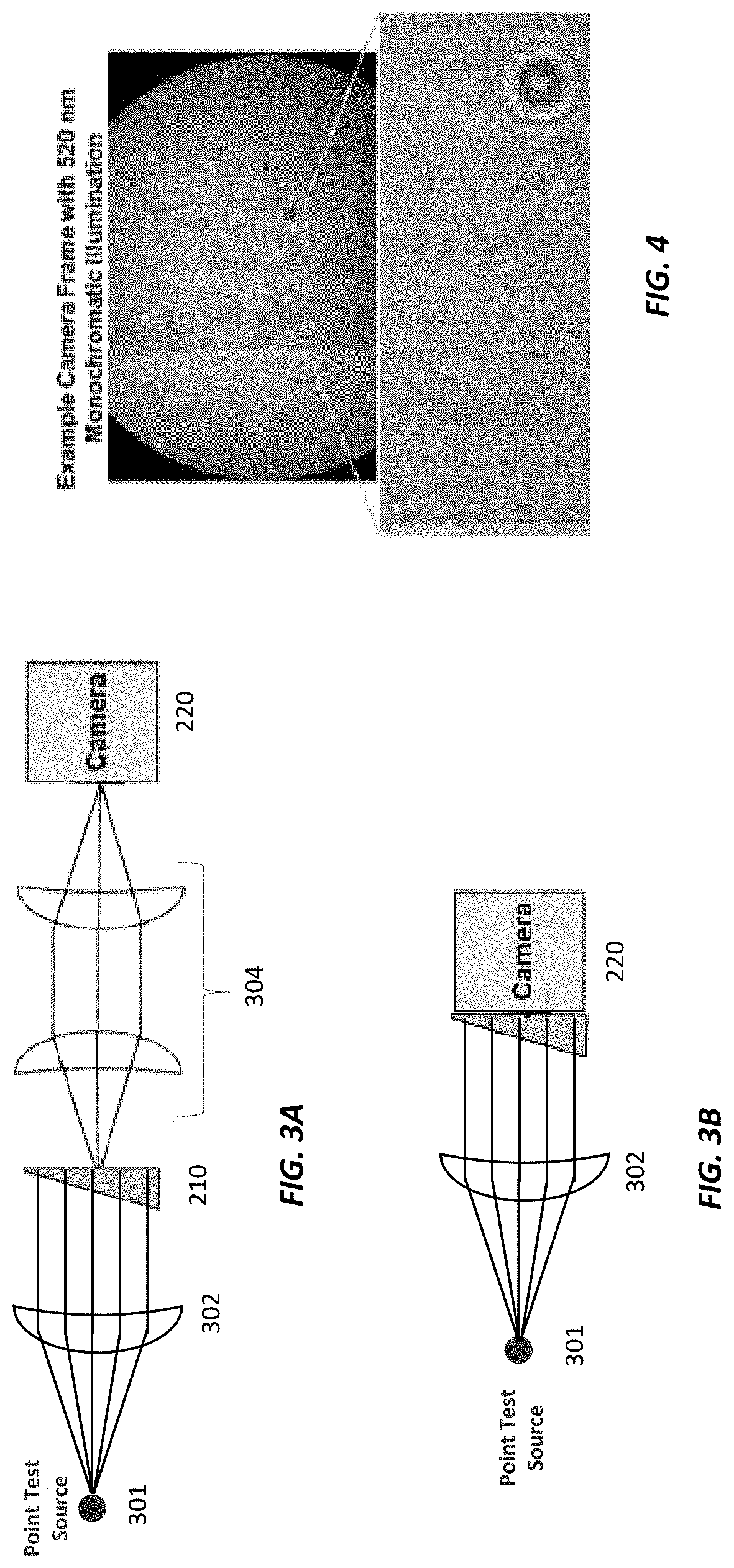Compact Computational Spectrometer Using Solid Wedged Low Finesse Etalon
a computational spectrometer and low finesse technology, applied in the direction of interferometric spectrometry, optical radiation measurement, instruments, etc., can solve the problem of too thin for a single element practical device, and achieve the effect of improving spectral resolution, reducing spectral artifacts, and improving spectral resolution
- Summary
- Abstract
- Description
- Claims
- Application Information
AI Technical Summary
Benefits of technology
Problems solved by technology
Method used
Image
Examples
Embodiment Construction
[0040]A single-element wedged etalon with a low finesse (e.g., a finesse of 1.5 to 3) can generate wavelength-dependent interference for spectral reconstruction. When operating with a low finesse due to low reflectivity of the wedge surfaces, the interference pattern created immediately beyond the wedge is determined primarily from the beam propagating straight through the wedge and the first beam reflected by the wedge. In the limit that the reflectivity of each wedge surface approaches zero, the wavelength-dependent interference is sinusoidal and well-suited for simple Fourier techniques, albeit possibly at the expense of the depth of modulation, or signal contrast, of the interference pattern. In the other extreme, as the finesse, or similarly reflectivity of each wedge surface, increases, the number of beams to generate the interference pattern increases along with the depth of modulation. Increasing the depth of modulation of the interference pattern directly increases the sens...
PUM
 Login to View More
Login to View More Abstract
Description
Claims
Application Information
 Login to View More
Login to View More - R&D
- Intellectual Property
- Life Sciences
- Materials
- Tech Scout
- Unparalleled Data Quality
- Higher Quality Content
- 60% Fewer Hallucinations
Browse by: Latest US Patents, China's latest patents, Technical Efficacy Thesaurus, Application Domain, Technology Topic, Popular Technical Reports.
© 2025 PatSnap. All rights reserved.Legal|Privacy policy|Modern Slavery Act Transparency Statement|Sitemap|About US| Contact US: help@patsnap.com



